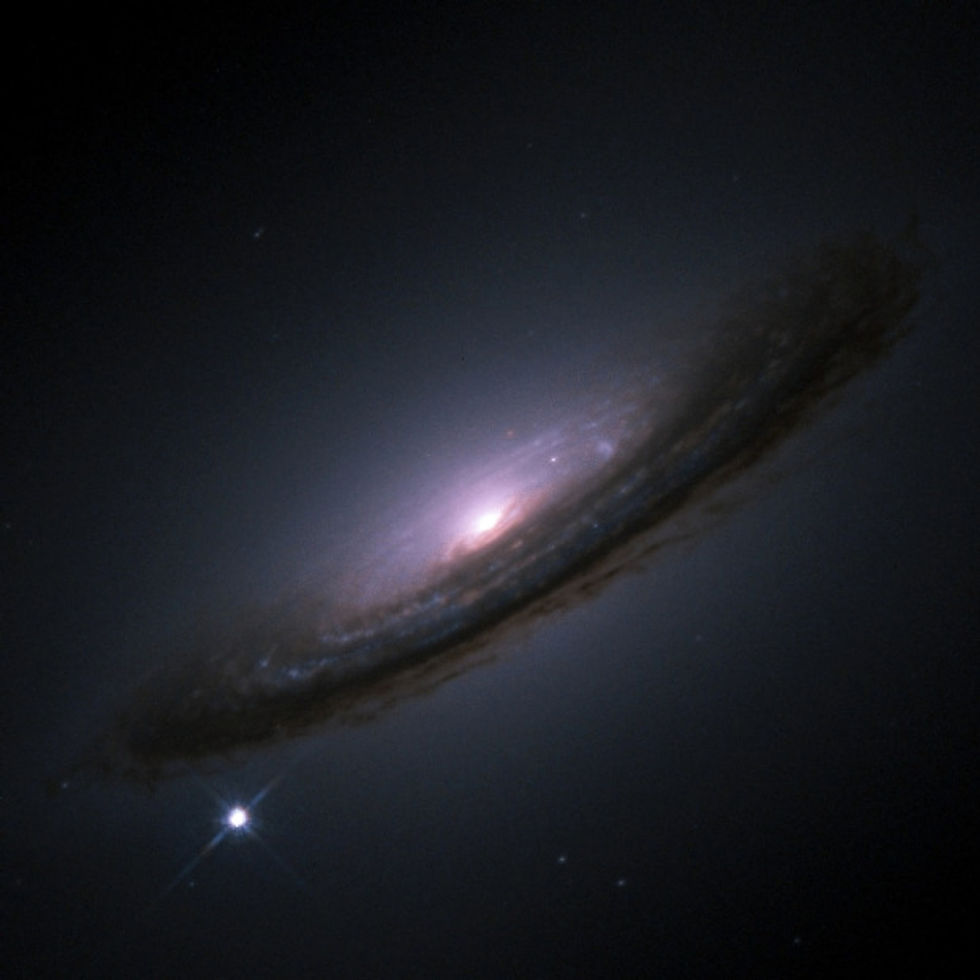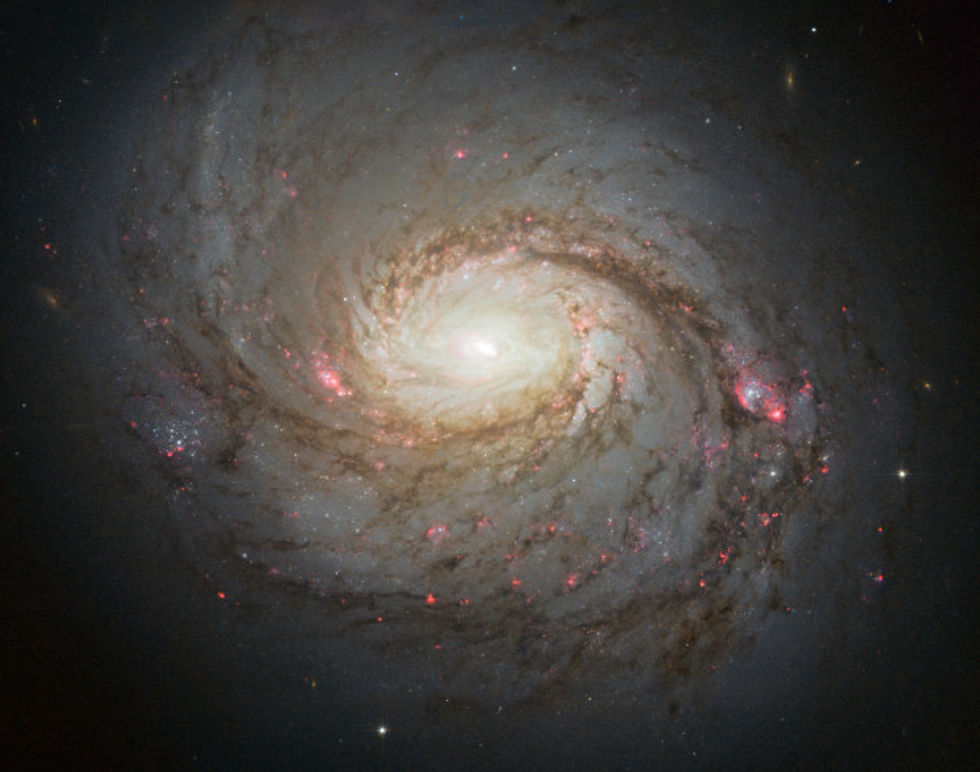How many arms does the Milky Way have?
- LASM

- Dec 17, 2013
- 3 min read
During the last century telescope and image capturing technology grew by leaps and bounds. Astronomers for the first time could peer into the far reaches of space to study the hundreds of billions of galaxies that lie beyond our own. Over the years, astronomers developed a systems of galactic classification that categorized galaxies based on their shape and composition. Edwin Hubble created the original system of classification in the early 1900s, which was later expanded to include various other sub-categories as galactic observations improved. A majority of galaxies fall into the following categories…
Elliptical

These galaxies are spherical or ellipsoid in shape, with very few visible features. They contain up to one trillion stars, and very little interstellar dust and gas. Research has indicated that stars in elliptical galaxies are often very old, which is why the galaxies themselves glow with a yellowish-white hue. Also there is less star formation occurring in this type of galaxy.
Lenticular

Lenticular galaxies can be imagined as a mid category between that of the featureless elliptical galaxies and the dramatic spiral galaxies. These galaxies have a defined disk of gas and dust, as well as a glowing bulge at their middle. They do not exhibit spiral arms, but do have large amounts of gas and dust within their disks. This leads to high amounts of star formation within.
Spiral

Spiral galaxies have very distinct shape and structure consisting of a central bulge of bright stars, and bright arms. Spiral galaxies contain large amounts of gas and dust, and stars of varying ages. Recent theories have explained that the arms are shaped by slowly rotating matter density waves that compress the interstellar gas and dust triggering star formation.
So what type of galaxy is our own Milky Way? That has proven to be a tricky question to answer, since we live inside of it, we can’t simply take a picture of it as we do with the countless other galaxies in our universe. You can take pictures of your neighbors’ houses from out your window, but you can’t take a picture of your whole house unless you go outside and walk away to get a view. The Voyager Spacecraft launched in the 1970s are the furthest man-made probes, and they have only recently exited the Solar System; we are not anywhere close to taking a picture like this of our home galaxy any time soon.
There are some simple observations anyone can make to help them classify our Milky Way.
1. The Milky Way appears as a thin strip across our sky, which implies that it is a thin disc, rather than a sphere of stars.
2. The center of the Milky Way is visible in the southern sky each Summer. This shows that our galaxy has a definite bulge at its middle.

These facts, paired with other astronomical observations have indicated that our Milky Way is a spiral galaxy. However, the question still remains… How many arms does it have?
The interstellar dust in our galaxy blocks our view of faraway stars in the visual wavelengths. Radio telescopes allow astronomers to see through the dust to identify the locations and motions of these stars. Using this information, astronomers extrapolate the shape of our galaxy. Up until recently, data from the Spitzer Space Telescope indicated that there were two distinct spiral arms (where previous theories had suggested four arms). Spitzer was targeting middle-aged cooler stars like our Sun.
A very recent study that targeted supermassive hot young stars painted a different picture: four arms. Due to the large amount of star formation that occurs in the arms of spiral galaxies, these types of stars are found nearly exclusively in the arms. Though these stars live short lives, the high rate of star formation in the arm regions replenishes the populations of them.
Some astronomers theorize that gravitational forces within the Milky Way may have lead to an uneven distribution of the middle-aged and older cooler stars into two of the arms more than the other two, leading the Spitzer data to indicate two arms. Meanwhile the populations of supermassive hot young stars flourish in all four arms.
Truly understanding our home galaxy is a unique challenge that motivates astronomers world wide. Our picture of our galaxy and the universe beyond continues to evolve as we continue to look outward.




Comments